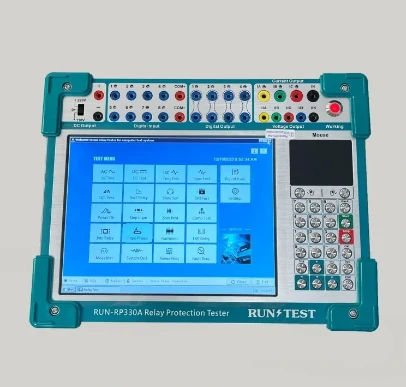How to Use the Relay Tester?
juin 12, 2025
The most important thing in electrical engineering is to ensure that the protective relays are always functioning correctly because that is the first condition for both the safety of employees and the prevention of the damage of equipment. The testeur de relais is the best device for checking the operability of these protective devices. The article will show you the steps on how to perform a relay test, using the relay protection test as an example and introducing the 3 phase relay test set’s main features.

Major Attributes of Relay Testers
Prior to the discussion on the use of a relay tester, knowing some of its key features will be helpful:
- Fault Simulation: The tester has the ability to copy a variety of faults that occur in electric power systems, which in turn cause the relay to change its status, allowing technicians to check the proper functioning of the relay in various scenarios.
- Multi-phase tests:Most electrical systems operate using three-phase power. For the correct relay tester to adequately support three-phase, i.e., multi-phase, conditions, the Kit de test de relais triphasé is the best example.
- Compatibility: The latest relay testers are multi-purpose, as they support the checking of several relay types, e.g. overcurrent, distance, and differential relays that may be applied equally to traditional and digital relays.
- Automation: Most of the relay testers that are now in the market are designed as a kit which comes with the necessary software to handle the testing work in an automated way.
Steps to Use a Relay Tester
The use of a relay tester implies a number of simple steps, with the following being a clear guide to the process.
Step 1: Prepare the Tester
The devices of the Equipment: Firstly, it is necessary to take a visual inspection of the relay tester so as to determine any flaws. Make sure that all the connections are tight and the instrument is in good working order.
Clan the Environment: Remove all the obstacles before the test. If the relay model is such that it is possible to trip accidentally then it should be disconnected from the system.
Step 2: Connect the Tester
Wiring: Connect a relay tester to the relay same you want to test.
Power Source: Make sure that the relay tester is powered by the right power source.
Step 3: Configure the Test Settings
Choose What Test You Want To Perform: Indicate the kind of test that you will undertake. There may be choices for functional tests, timing tests, burden tests, coordination tests, and accuracy tests.
Set the Parameters: Specify the features of the test, e.g. such as the voltage, current, and fault to be used. With the user interface that comes with The 3 phase relay test set, you can easily set these parameters.
Step 4: Conduct the Test
Start Testing: Begin the test by following the commands on the relay tester’s screen. The test has to be observed during its run, and this is when you also get to know how the relay reacts to the faults that are simulated.
Observe Results: Take down the results coming from the tester. These can be in the form of reaction times, tripping characteristics, and variations from the expected behavior.
Step 5: Analyze the Data
Review Reports: The tester would generate these yourself, and you just need to go through them and find out if there are any performance issues or things that need your attention.
Make Adjustments: It is possible to modify the settings or even change the relay in a situation where the relay hasn’t worked as expected.
Step 6: Document the Process
Keep Records: Document all test results and any changes made to the relay settings. This information is crucial for future reference and compliance with safety standards.
Why Regular Testing is Essential
Regular relay protection tests using a relay tester are vital for several reasons:
- Preventing Failures: Routine testing helps identify potential issues before they lead to significant failures, protecting both equipment and personnel.
- Compliance: Many industries require regular testing of protective devices to comply with safety regulations. Using a relay tester ensures adherence to these standards.
- Enhancing Reliability: By ensuring that relays operate correctly, technicians can maintain the overall reliability of the electrical system.
Conclusion
Using a relay tester is essential for ensuring the safety and reliability of electrical systems. By following the steps outlined above, technicians can effectively conduct relay protection tests and ensure that protective relays operate as intended. The 3 phase relay test set, such as the RUN-RP330A, offers advanced features that simplify the testing process and enhance accuracy.
Investing in a quality relay tester is a proactive step toward maintaining the integrity of your electrical systems. If you’re looking to enhance your testing capabilities, consider incorporating a relay tester into your maintenance routine today.Contact us now!
